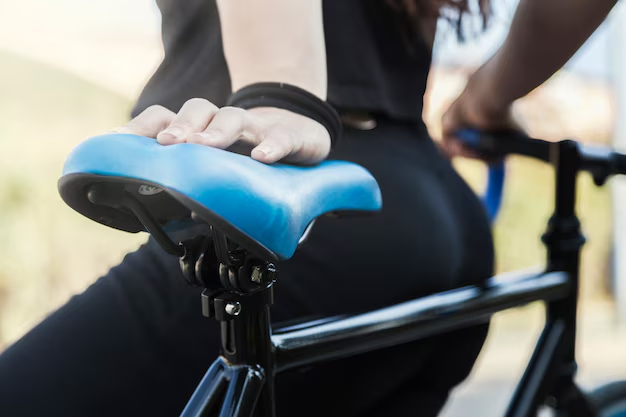The perfect bike seat can transform your cycling experience, especially for women. It not only offers comfort but also minimizes exhaustion and boosts performance. The following guide delves into the realm of road bike saddles specifically created for ladies and pinpoints the most cozy option based on extensive testing to elevate your biking journey. Discover our hand picked selections that excel in their unique features right here!
Importance of a Comfortable Bike Seat for Women
Choosing the right bike seat that provides adequate support and fit is crucial for women during long rides. This helps reduce discomfort while also preventing any potential injuries, given their distinct anatomies differing from men’s.
Key Features of the Best Bike Seat for Women
To ensure maximum comfort for women while selecting a bike seat, it is recommended that you take into account the following features.
Width and Shape
The comfort and support of a bike seat, particularly for women riders, depend on its width and shape. For female anatomy’s optimal fitment with broader seats catering to sit bones’ backing is quintessential for long rides without experiencing any discomforts. Besides, the design that conforms naturally to body shapes assists in evenly dispersing weight while diminishing pressure points towards an enhanced soothe throughout riding sessions.
- Wider Seat: Provides better support for wider sit bones, essential for long rides.
- Ergonomic Shape: Designed to follow the body’s natural contours for even weight distribution.
- Contoured Design: Reduces pressure points, enhancing comfort and preventing soreness.
- Adjustable Width: Some seats offer adjustable width to accommodate different body types.
- Nose Shape: A shorter or cut-out nose can reduce chafing and improve comfort.
Padding
Padding is essential for cushioning the rider against shocks and vibrations from the road. Gel and foam padding are commonly used to enhance comfort by reducing pressure points. Gel padding molds to the rider’s body, offering customized support and absorbing vibrations, while foam padding provides firm support, suitable for longer rides where consistent support is necessary. The combination of both materials can offer the best of both worlds.
- Gel Padding: Offers superior comfort by molding to the rider’s body, providing customized support.
- Foam Padding: Lightweight and provides firm, consistent support, ideal for long rides.
- Pressure Reduction: Both gel and foam reduce pressure points, enhancing comfort and reducing fatigue.
- Layered Padding: Some seats use a combination of gel and foam layers for optimal comfort.
- Density Variations: Different foam densities can cater to various riding styles and preferences.
Cutouts and Grooves
Cutouts and grooves in bike seats are designed to relieve pressure on sensitive areas, which is especially important for female riders. These features help prevent numbness and discomfort during long rides by allowing for better blood flow and reducing pressure on soft tissues. Additionally, grooves improve airflow, keeping the rider cool and comfortable, which is crucial for maintaining performance over extended periods.
- Pressure Relief Cutouts: Help prevent numbness and discomfort by improving blood flow.
- Central Grooves: Improve airflow and reduce heat build-up, keeping the rider cool.
- Enhanced Comfort: Both features contribute to overall riding comfort by relieving pressure on sensitive areas.
- Anatomical Design: Seats designed with female anatomy in mind offer more effective pressure relief.
- Ventilation Channels: Additional channels can further enhance airflow and cooling.
Cover Material
The cover material of a bike seat affects its durability, breathability, and overall comfort. Durable materials like leather or high-quality synthetic options are ideal for long-lasting performance. Breathable materials help keep the seat cool and dry, which is particularly important during extended rides. The choice of material also affects the maintenance and longevity of the seat.
- Durable Materials: Leather or high-quality synthetics offer longevity and resistance to wear.
- Breathable Covers: Keep the seat cool and dry, enhancing comfort during long rides.
- Water-Resistant Options: Some materials offer water resistance, which is beneficial in wet conditions.
- Anti-Slip Surface: Textured or treated covers can provide better grip and prevent slipping.
- Ease of Maintenance: Synthetic covers are often easier to clean and maintain compared to leather.
Rails
Rails provide the structural support for a bike seat, influencing its weight, durability, and shock absorption. Titanium and carbon fiber rails are popular for their excellent balance between strength and weight. Titanium rails are known for their durability and ability to absorb shocks, while carbon fiber rails are lightweight, making them suitable for performance-oriented riders who prioritize speed and efficiency.
- Titanium Rails: Offer a good balance between weight and durability, with excellent shock absorption.
- Carbon Fiber Rails: Lightweight and strong, ideal for performance and competitive cycling.
- High Performance: Both materials provide excellent options for serious cyclists looking for durability and weight savings.
- Adjustability: Some rails offer fore-aft adjustability to fine-tune the seat position.
- Vibration Damping: High-quality rails can also help dampen road vibrations, enhancing comfort.
Top Road Bike Saddles for Women
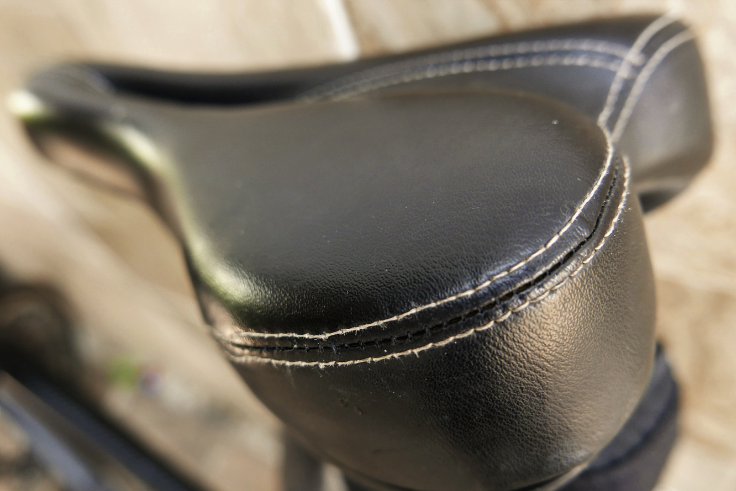
When selecting the best road bike saddle for women, consider features like padding, cutout design, cover material, and rails. This section highlights some of the top road bike saddles for women, detailing their key features, prices, and reasons why they stand out as the best choices.
Selle Italia Lady Gel Flow
The Selle Italia Lady Gel Flow is designed with female riders in mind, offering a combination of gel padding and a cutout design to enhance comfort. The gel padding molds to the rider’s body, providing customized support, while the cutout design relieves pressure on sensitive areas. This saddle is ideal for long rides, where comfort and durability are paramount.
| Feature | Description |
| Price | $99.99 |
| Gel Padding | Molds to the rider’s body for customized support |
| Cutout Design | Relieves pressure on sensitive areas |
| Durable Cover | High-quality synthetic material |
| Why It’s the Best | Combines comfort and durability, ideal for long rides |
Brooks England B17 S Imperial
The Brooks England B17 S Imperial is a classic leather saddle known for its comfort and durability. The leather cover molds to your shape over time, providing a personalized fit that enhances comfort and support. The cutout design further helps to relieve pressure on sensitive areas, making it a top choice for long-distance riders.
| Feature | Description |
| Price | $130.00 |
| Leather Cover | Molds to the rider’s shape over time |
| Cutout Design | Relieves pressure on sensitive areas |
| Steel Rails | Provide strength and durability |
| Why It’s the Best | Leather cover molds to your shape for a personalized fit |
Fizik Luce R5
The Fizik Luce R5 is designed specifically for women, featuring a pressure relief channel and a sleek, lightweight design. The carbon-reinforced shell ensures strength without adding unnecessary weight, making it an excellent choice for performance-oriented riders. The pressure relief channel helps to reduce discomfort, enhancing overall riding comfort.
| Feature | Description |
| Price | $99.00 |
| Carbon-Reinforced Shell | Provides lightweight strength |
| Pressure Relief Channel | Reduces discomfort by improving blood flow |
| Sleek Design | Aerodynamic and performance-oriented |
| Why It’s the Best | Lightweight and designed for female anatomy, offering great support and comfort |
How to Choose the Most Comfortable Bike Seat for Women
Selecting the most comfortable bike seat for women involves considering personal preferences and riding style. Here are some tips:
Test Different Saddles
Testing different saddles is crucial to find the one that suits you best. Every rider’s anatomy is unique, and what works for one person may not work for another. By trying various shapes and sizes, you can determine which saddle provides the best support and comfort for your sit bones and riding style.
- Variety of Shapes: Test saddles with different shapes, such as flat, curved, or contoured.
- Different Sizes: Experiment with various widths to find the one that supports your sit bones effectively.
- Padding Types: Try saddles with gel, foam, or minimal padding to see which offers the most comfort.
Consider Your Riding Position
Your riding position greatly influences the type of saddle that will be most comfortable. Different riding styles, such as recreational, road biking, or mountain biking, require different saddle designs. Understanding how your position affects saddle comfort can help you make a more informed choice.
- Recreational Riding: Opt for wider, more padded saddles for an upright position.
- Road Biking: Choose narrower saddles with a streamlined design for a forward-leaning position.
- Mountain Biking: Look for durable, shock-absorbing saddles that can handle rough terrain.
Adjust Your Saddle
Proper saddle adjustment can significantly impact comfort. Even the best saddle can cause discomfort if not adjusted correctly. Ensure your saddle is positioned to support your body properly, reducing pressure on sensitive areas and enhancing overall comfort.
- Saddle Height: Adjust the height so your legs are slightly bent at the bottom of the pedal stroke.
- Saddle Tilt: Ensure the saddle is level or slightly tilted to suit your comfort preference.
- Fore-Aft Position: Adjust the saddle’s position forward or backward to align with your sit bones.
Women’s Specific vs. Unisex Saddles
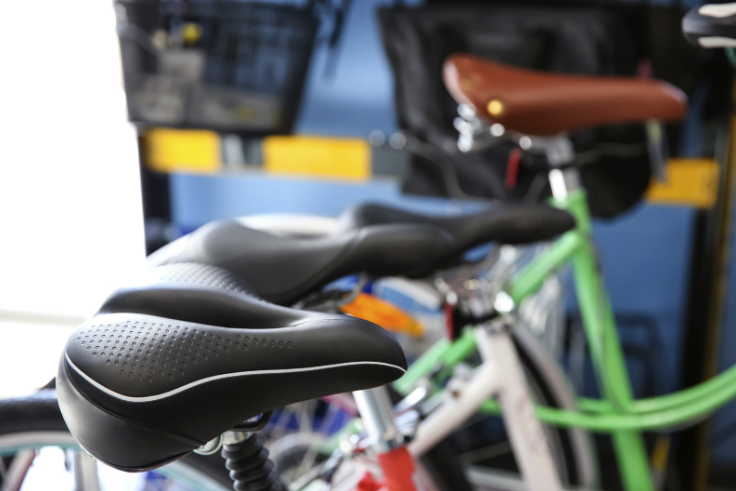
Understanding the difference between women’s specific and unisex saddles can help you make an informed decision:
Women’s Specific Saddles
Women’s specific saddles are designed to accommodate the anatomical differences between men and women, particularly focusing on wider sit bones and different pelvic shapes. These saddles often feature a wider rear section, additional padding, and specific cutouts to enhance comfort and support for female riders.
- Wider Sit Bones: Women’s specific saddles are broader to support wider sit bones, reducing pressure and enhancing comfort.
- Pelvic Shape: Designed to match the unique pelvic anatomy of women, providing better alignment and support.
- Additional Padding: Often includes extra padding to cushion sensitive areas and absorb road vibrations.
- Specific Cutouts: Features cutouts and grooves to relieve pressure on sensitive areas, preventing numbness and discomfort.
- Comfort and Support: Tailored to provide maximum comfort and support during long rides.
Unisex Saddles
Unisex saddles are designed to cater to both men and women, often resulting in a narrower shape. While these saddles can be suitable for some female riders, they might not provide the same level of comfort as women’s specific saddles due to the lack of tailored support for wider sit bones and different pelvic shapes.
- Narrower Design: Unisex saddles are typically narrower, which might not support wider sit bones effectively.
- Generic Shape: Designed to fit both men and women, often compromising on specific anatomical needs.
- Standard Padding: May not have the extra padding found in women’s specific saddles, potentially leading to discomfort.
- Limited Cutouts: Fewer cutouts and grooves, which may not relieve pressure as effectively.
- Versatility: Suitable for a wide range of riders but may lack the tailored comfort of women’s specific saddles.
The Role of Saddle Padding
Padding plays a crucial role in finding the most comfortable bike seat for women. Here’s a look at different padding types:
Gel Padding
Gel padding is known for its excellent shock absorption and superior comfort. It molds to the rider’s body, providing customized support that can help reduce pressure points and enhance comfort, especially during long rides. This type of padding is ideal for recreational riders who prioritize comfort over other factors.
- Shock Absorption: Gel padding excels at absorbing shocks and vibrations from the road, making rides smoother and reducing fatigue over long distances.
- Customized Support: Molds to the rider’s body, offering personalized comfort and reducing pressure points. This adaptability ensures that the saddle conforms to individual anatomical differences.
- Comfort: Provides a plush feel, making it suitable for long-distance rides and recreational cycling. The plushness of gel padding helps in distributing weight evenly, reducing strain on sit bones and soft tissues.
Foam Padding
Foam padding provides firm support and is known for its durability. It maintains its shape over time, making it a reliable choice for riders who prefer a balance between support and comfort. Foam padding is often used in performance-oriented saddles, as it provides consistent support without adding excessive weight.
- Firm Support: Offers a stable and firm base, which is beneficial for maintaining proper riding posture. This firmness helps in preventing excessive sinking into the saddle, which can lead to discomfort.
- Durability: Foam padding retains its shape over time, ensuring long-lasting comfort. It can withstand the repeated pressure of riding, maintaining its supportive qualities ride after ride.
- Lightweight: Generally lighter than gel padding, making it suitable for performance-oriented riders. The reduced weight can enhance overall bike performance, particularly important in competitive cycling.
Minimal Padding
Minimal padding is preferred by some riders for its lightweight and firm support. This type of padding is often used in racing saddles, where weight reduction and efficiency are crucial. While it may not offer the plush comfort of gel or foam padding, minimal padding can provide excellent support for short, intense rides.
- Lightweight: Minimal padding contributes to a lighter overall saddle weight, which is beneficial for competitive cycling. The reduction in weight can lead to better acceleration and handling.
- Firm Support: Provides a firm base that supports efficient power transfer during pedaling. This support is critical for maintaining high performance and speed.
- Efficiency: Ideal for short, intense rides where comfort is secondary to performance. Minimal padding allows for better bike control and responsiveness.
Tips for Installing and Adjusting Your Bike Seat
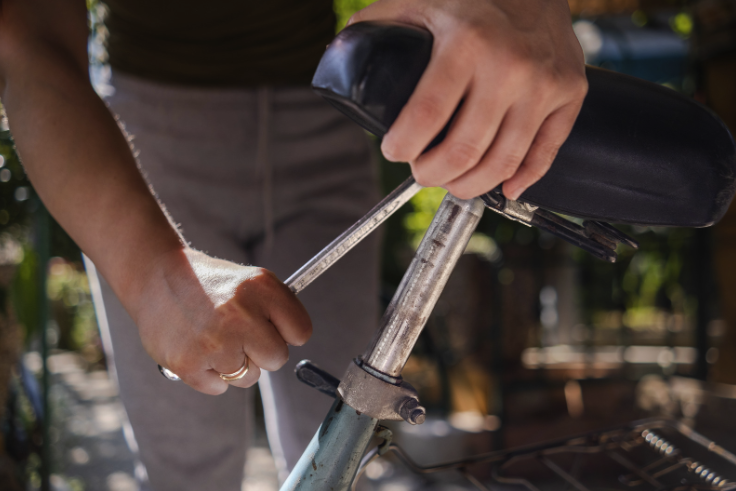
Proper installation and adjustment of your bike seat are crucial for ensuring maximum comfort and performance. Here are some essential tips:
Installation Tips
Ensuring your saddle is properly installed is the first step towards a comfortable and efficient ride. A correctly installed saddle will help distribute your weight evenly, prevent unnecessary pressure on sensitive areas, and enhance your overall cycling experience.
- Level the Seat: Ensure your saddle is level to prevent discomfort and pressure on sensitive areas.
- Secure the Seat Post: Tighten the seat post clamp securely to avoid any movement while riding.
- Check Alignment: Make sure the saddle is aligned with the bike’s frame to ensure a straight and comfortable riding position.
Adjustment Tips
Adjusting your bike seat to the correct height, tilt, and fore-aft position is essential for comfort and performance. Proper adjustments can help prevent knee strain, enhance pedaling efficiency, and ensure a comfortable ride.
- Saddle Height: Adjust the saddle height so that there is a slight bend in your knee when the pedal is at its lowest point. This helps to prevent knee strain and provides efficient power transfer.
- Saddle Tilt: A level saddle is usually the most comfortable for most riders. However, slight adjustments can be made based on personal preference.
- Fore-Aft Position: Adjust the saddle forwards or backwards to ensure that your knees are correctly positioned over the pedals. This helps in reducing stress on the knees and improving pedaling efficiency.
- Test Rides: After making adjustments, go for a test ride to ensure everything feels right. Make further adjustments as necessary to find your optimal position.
Maintenance Tips for Your Bike Seat
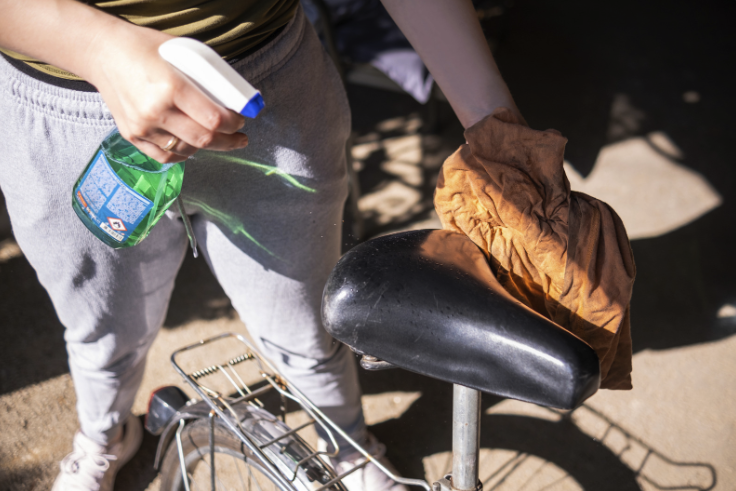
Proper maintenance can extend the life of your bike seat and keep it comfortable. Here are some tips:
Regular Cleaning
Regular cleaning is essential to remove sweat, dirt, and grime that can accumulate on your bike seat. This helps maintain the appearance and hygiene of the saddle, preventing the buildup of substances that can cause wear and tear over time.
- Wipe Down After Rides: Use a damp cloth to wipe down your saddle after every ride. This helps remove sweat and dirt that can degrade the material. Pay special attention to areas where dirt and sweat can accumulate, such as seams and cutouts.
- Mild Cleaners: Use mild soap and water for a more thorough cleaning. Avoid harsh chemicals that can damage the saddle material. For stubborn grime, a soft brush can help lift dirt without scratching the surface.
- Dry Thoroughly: Ensure the saddle is completely dry before your next ride to prevent mold and mildew. If your saddle gets wet, dry it thoroughly with a soft towel and allow it to air dry completely.
Check for Wear and Tear
Regularly inspecting your bike seat for signs of wear and tear can help you catch and address potential issues before they become serious problems. This ensures your saddle remains comfortable and safe to use.
- Inspect Padding: Check the padding for any signs of compression or degradation. Worn padding can reduce comfort and support, making long rides uncomfortable. Feel for areas where the padding might be thinning or uneven.
- Examine Cover: Look for cracks, tears, or frayed edges on the saddle cover. Damaged covers can lead to further deterioration of the saddle. Check seams and edges, as these areas are more prone to wear.
- Check Rails: Ensure the rails are secure and free from cracks or bends. Damaged rails can affect the stability and safety of the saddle. Tighten any loose bolts and check for rust or corrosion.
Condition Leather Saddles
Leather saddles require special care to keep them supple and prevent cracking. Regular conditioning helps maintain the leather’s natural flexibility and appearance.
- Use Leather Conditioner: Apply a high-quality leather conditioner every few months to keep the leather supple. This prevents the leather from drying out and cracking.
- Avoid Excess Moisture: Keep your leather saddle dry. If it gets wet, dry it off as soon as possible and apply conditioner once it’s completely dry. Avoid leaving your bike in the rain or damp conditions.
- Store Properly: Store your bike in a cool, dry place to prevent the leather from being exposed to extreme temperatures or humidity. Use a cover if necessary to protect the saddle from dust and dirt.
Conclusion
Finding the best bike seat for women is crucial for a comfortable and enjoyable cycling experience. Whether you’re looking for the most comfortable bike seat for women or a high-performance road bike saddle, this guide provides the information and insights you need to make an informed decision.
FAQ
A comfortable bike seat for women typically has a wider design to support the sit bones, appropriate padding to reduce pressure points, and a cutout or groove to alleviate pressure on sensitive areas.
If your hips rock side to side while pedaling, your seat might be too high. If you feel excessive pressure on your knees, it might be too low. Adjust the height so your leg has a slight bend at the bottom of the pedal stroke.
Both have their advantages. Gel padding offers excellent shock absorption and immediate comfort, while foam padding provides firmer support and can be more durable over time.
It depends on the usage and quality of the saddle. Generally, a high-quality bike seat can last several years, but if you notice significant wear, discomfort, or damage, it’s time to replace it.
Yes, men can use women’s bike seats if they find them comfortable. The key is finding a saddle that provides adequate support and fits their anatomy.
